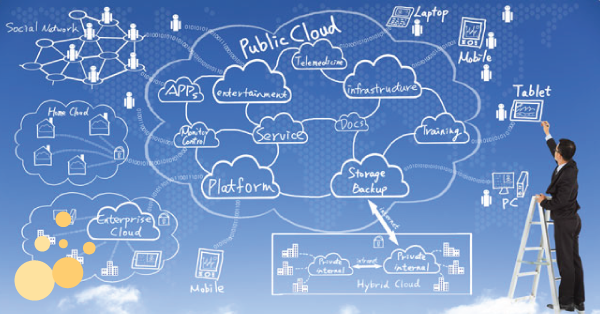Mitel MiVoice Connect End of Life is Here
**This article has been updated on 10/10/2024 to include new information and dates provided by Mitel. The end isn't just near; it's here. Mitel...
Learn about our company and our
customer-first philosophy
Put a face to the name and learn
more about our team
Get in touch to learn more about
our partner services
We specialize in a variety of industries, which enables us to offer unique insights
Read the latest and greatest about what
we've been up to
Join our newsletter to get our
latest resources delivered to your inbox
See how we’ve helped businesses
improve their communications
See the latest rankings and reports
for the Gartner Magic Quadrant in
UCaaS and CCaaS
Visit our growing library of resources about cloud and the customer journey
Enjoy reading our frequent articles
written by us for you
If you've missed a recent webinar or event, no problem, access them here
We'll make sure you receive our recent
posts and resources directly to your inbox

Businesses of all sizes across the globe are currently exploring uncharted waters. Even the biggest technophobes have been forced to adopt video conferencing, and a variety of additional online tools fit for a new world of remote working at scale. The speed of change and disruption to the business landscape has challenged every leader to turn adversity into an advantage.
Ensuring that remote workers are adjusting to this new way of working and keeping them motivated is just the beginning. Businesses need to ensure that all teams are successful and productive in the new virtual workspace.
To achieve this success, your technological infrastructure needs to be the foundation to help you build for the long-haul journey ahead.
Contrary to popular belief, remote working isn't as easy as signing up for the latest must-have software tools and a range of affordable laptops. The backbone of this new way of working will be the infrastructure that underpins your remote work offering ensuring you reap the long-term benefits.
Unfortunately, 86 percent of employees believe that a lack of collaboration and ineffective communication are largely responsible for workplace failures. Despite having more options than ever, only 13 percent of workers use collaboration software.
On a more positive note, 85 percent of businesses reported that implementing flexible work locations have made their organization more productive.
A unified communications partner will play an essential role in ensuring your teams can effectively collaborate and incorporate robust mobility apps.
Collaboration tools such as instant messaging along with audio and video conferencing are usually top of corporate wish lists. But advanced call transfers and call routing options are often the unsung heroes that can make a difference.
When building a long-term strategy to thrive and survive in the new world of remote working, it's critical that business leaders zoom out to look at the bigger picture.
The key to increased productivity outside of the office is the seamless integration between core business applications. Unified communications solutions make it easy to integrate with sales and marketing applications such as Salesforce, Zendesk, and Dynamics CRM.
Without effective communication, distributed workplaces can quickly descend into chaos. Faced with conflicting projects and priorities, it's crucial that everyone has clear expectations of their deliverables. Departments will need to collaborate closely and have a digital channel to brainstorm new ideas while clearly expressing their wants and needs.
Although employees are working from multiple locations, it's important to remember that your business goals remain the same. Whether you are in or out of the office, alignment across your objectives and how you establish requirements or assign ownership is key to unlocking real-time problem resolution regardless of location.
Every staff member will need to be accessible and responsive from any device and location. It's often said that the most dangerous phrase in business is, 'We've always done it this way.' Employees will need to be guided through the new way of working and ensure they don't fall back into their old habits by ditching the remote workforce concept entirely.
Traditionally, many established businesses struggle to drift from the tools, processes, and strategies that made them successful in the past. Instead of digging themselves out of a hole, they just deepen it.
By contrast, their more agile competitors typically adopt a different mode of thinking with new products, technologies, and strategies.
Zoom is now valued at more than American Airlines, Expedia and Hilton combined. Our world is now very different, and a battle to remain relevant is taking shape. In an age of unprecedented change, disruption, and uncertainty, businesses will need to dramatically rethink how they build teams.
61 million Gen Zers are also predicted to enter the US workforce this year. These digital natives who cannot remember a time before the iPhone will represent 36% of the global workforce and radically change it forever. For employers to attract the best talent, they will need to offer positions that are both remote and flexible.
Digital tools and automated processes are now essential in driving social engagement and powering productivity remotely. A legacy thinking mindset is equally as damaging as legacy technology. But to make it work, there needs to be an equal commitment from both employees and employers to upgrade their thinking by exploring new ways to engage.
Sure, PBX to cloud migrations and unified communications can increase IT costs in the short term, but as we increasingly question the need for expensive office facilities and back to back meetings, it's evident that life in a post-pandemic age will be very different.
Businesses that dare to play the long game will thrive by building a more scalable and cost-effective business environment fit for a digital world.
The prospect of a global recession can be incredibly daunting for every business. Employees will already be anxious that your business may not survive the crisis. But it's worth remembering that it can also be a catalyst for innovation. Encouraging innovation enables teams to contribute actively and feel that they are actively responding to the crisis rather than job losses and accepting defeat.
Your customer's needs have changed, and your business is challenged with meeting them to remain significant to their lives. Prominent examples are how the team at F1 helped with the production of 20,000 ventilators amid the corona virus outbreak. The owner of Louis Vuitton also started making hand sanitizer.
Innovative problem-solvers attempting to adapt and play an essential role in the challenges ahead are the ones with a bright future. But for an innovative culture to exist, businesses must have both the tech and the mindset to increase employee engagement.
According to Gartner, 88% of organizations have encourages their employees to work from home because of the Coronavirus. There is a huge shift taking place as businesses and their employees begin building a new future of work.
However, your overall business goals and day-to-day work shouldn't be changed by working in a different environment. As businesses explore beyond keeping operations running, it's time to accept that the future of work is from anywhere, and at any time.
What are you doing to prepare for the inevitable?
If you enjoyed this article you may also enjoy:

**This article has been updated on 10/10/2024 to include new information and dates provided by Mitel. The end isn't just near; it's here. Mitel...

Genesys and8x8are working together to create a product integration that combines the power of 8x8 Work and Genesys Cloud CX. It enables the premier

These days, themodern contact centerand Bluetooth headsets go together like oil and water; they will rarely be 100% compatible.

The COVID-19 pandemic has forced many companies to implement remote work policies due to work from home mandates, thereby opening the eyes of many to...

When you peruse news feeds onLinkedIn and IT Blogs one of the things that strikes you is the push to the bleeding edge on how fast everything is...

We hear this question asked every day: “What the heck is the deal with this buzz word “Cloud”" and why is that word being used everywhere?” The...